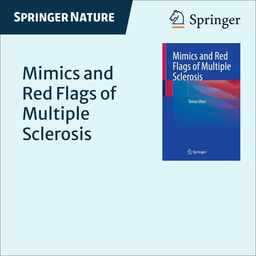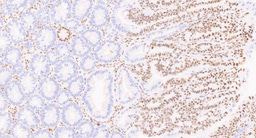
The story began in the summer of 2021 when a truck load of fossils was donated from a private collection to Nanjing University in China. The fossils came from the famous Jehol Biota, where thousands of feathered dinosaurs have been discovered. Naturally, we were curious and excited about the dinosaurs in the truck: were they feathered as well?
There were two dinosaur specimens, but neither of them appeared to preserve feathers, or any soft tissues for that matter. They appeared to preserve only the bony skeleton.
There was more to these specimens, however, than met the eye. Soft tissues can be replicated by minerals, which may blend in with the sediments. Ultraviolet (UV) light would be handy in this case as some minerals can be highly florescent under the UV.
So we brought in a high-power UV flashlight, and voila! In one of the dinosaurs, a specimen of Psittacosaurus, we saw patches of skin, on the chest and belly, fluorescing with a striking golden yellow glow.

The Psittacosaurus specimen under natural (upper half) and UV light (lower half).
The mineralised Psittacosaurus skin offered a rare opportunity to investigate the structure of the skin during feather evolution. Unlike the scaly skin of reptiles, the feathered skin of birds is highly specialised: the skin must grow feathers, support feathers, control feather position and orientation, and supply pigments to feathers during feather growth. Very little is known, however, about how and when did these skin specializations evolved in the transition from scales to feathers.
To date, only a handful of dinosaur skin fossils have been examined on a microscopic level. These specimens show that early birds and their close dinosaur relatives already had specialisations seen in the skin of modern birds. In order to understand how bird-style skin evolved, we therefore need to look at dinosaurs that branched off earlier in the evolutionary tree. Psittacosaurus is an ideal candidate. Aside from its famous tail feathers, the animal belongs to the ornithischian clade that diverged from other dinosaurs a long time ago, in the Triassic.
Just like dissecting modern tissues, we used a sharp scalpel to carefully dissect small pieces of the fossil skin from places that are free of glue – there is visible glue along cracks in the fossil-bearing rock slab. One of us – Dr Zixiao Yang – then brought the samples to University College Cork for further investigations as a part of his postdoctoral research project funded by the Irish Research Council and the Jurassic Foundation. Using X-rays and infrared light, remarkably, he found that the fossil skin is made of silica – the same as glass. This is completely unexpected as no other vertebrate fossils preserve soft tissues in this way.
The most exciting aspect of the mineralised skin, however, is the structure we saw under the scanning electron microscope. Incredible as it seems, very fine details of the skin are replicated faithfully, including both the cornified and uncornified layers of the epidermis, skin cells, and tiny ball-like structures – 2000 times smaller than grains of sand. In life, these tiny structures – called melanosomes – would have been loaded with melanin pigments.

Layers of fossil skin cells.
The fossil skin cells looked almost identical to those in modern reptiles, only petrified. They share a similar cell size and shape and they both have fused cell boundaries – a feature known only in reptiles.
Another feature that the fossil skin shares with modern crocodile scales is the pigment melanin. In crocodiles, colour patterns are caused by variations in the amount of melanin in the skin. Similar variations in melanin distribution are also apparent in the fossil skin. Psittacosaurus therefore probably had some sort of colour patterns on its scaly skin, although the exact colour is difficult to determine without chemical evidence. In contrast, birds normally don’t have pigments in their non-scaly skin, and this makes sense: birds have feathers to display colours.
What’s really strange is that the fossil skin seems relatively thin by reptile standards. Intriguingly, this is precisely the evidence that the Psittacosaurus scales were similar in composition to reptile scales. Reptile scales are hard and tough because they are rich in corneous beta proteins (CBPs, formerly known as the “beta keratins”). This is different to the other skin-building protein, keratin (formerly known as the “alpha keratins”), which makes up the soft skin of birds as well as mammals.
Birds and mammals can manage with soft skin because they are covered by feathers and fur. Psittacosaurus, on the other hand, had only its thin skin to physically protect itself. Because of this, we think that the skin must have been rich in CBPs rather than keratins. But why did Psittacosaurus have thinner skin than modern reptiles? This may have to do with how these animals moved around. Based on body proportions, our Psittacosaurus likely walked and ran on its hind legs; the chest and belly were raised off the ground. Unlike reptiles crawling on all four limbs, Psittacosaurus therefore didn’t need to have very thick skin on its belly for mechanical protection.
Collectively, the new fossil evidence supports zoned skin development in Psittacosaurus: a reptile-type condition in non-feathered regions and a bird-like condition in feathered regions. Intriguingly, this is consistent with zoned expression of genes, a mechanism that determines how birds today grow their feathers and scales in different body regions. Given that this mechanism is clearly present in Psittacosaurus, and has also been reported in another ornithischian dinosaur (Kulindadromeus), it may be very ancient, potentially present in dinosaur ancestors and even pterosaurs that had different skin structures in different body regions.
Our discovery further suggests that, in the early stages of feather evolution, bird-like skin developed only in feathered regions of the body, while the rest of the skin was still scaly, like in modern reptiles. Retention of reptile-type skin in non-feathered regions would have maintained the essential protective function of the skin against abrasion, desiccation and pathogens. This may have been vital for the survival of early feathered animals and, most importantly, the survival of feather genes at the dawn of feather evolution.
The study can be freely accessed at https://doi.org/10.1038/s41467-024-48400-3
For more information, please contact the corresponding author at zyang@ucc.ie.
Follow the Topic
-
Nature Communications

An open access, multidisciplinary journal dedicated to publishing high-quality research in all areas of the biological, health, physical, chemical and Earth sciences.
Related Collections
With Collections, you can get published faster and increase your visibility.
Clinical trials 2025
Publishing Model: Open Access
Deadline: Dec 31, 2025
Women's Health
Publishing Model: Hybrid
Deadline: Ongoing






Please sign in or register for FREE
If you are a registered user on Research Communities by Springer Nature, please sign in